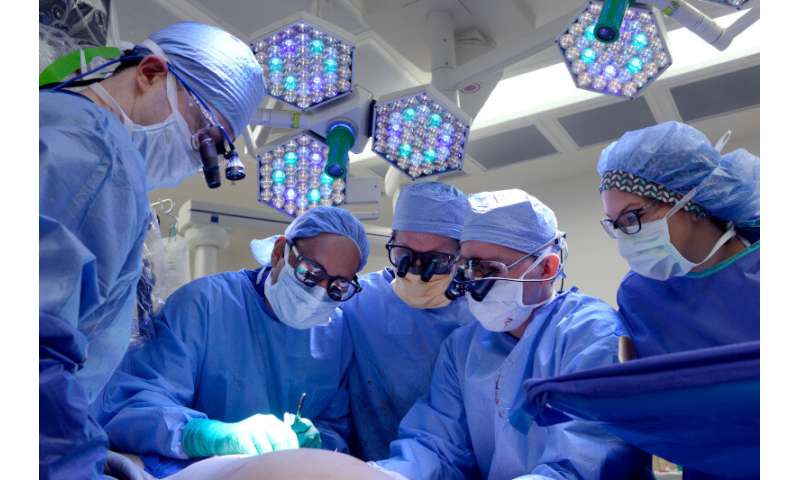
Surgeons at UT Southwestern Medical Center have developed a process to determine the best approach for single breast reconstruction that involves mapping out prior to surgery which blood vessels to use in lower abdominal tissue to minimize the chances of complications or undesirable outcomes including partial tissue death known as fat necrosis, which can cause local pain and lumpiness. The results were published last month in the Journal of Reconstructive Microsurgery.
At UT Southwestern, before surgery patients routinely undergo computed tomographic angiography (CTA), a procedure that maps out where major blood vessels run in the abdomen. Typically, breast reconstructive surgeons use CTA to decide prior to surgery which blood vessels to use and assess the quality and caliber of the vessels. The UT Southwestern team uses these CTA maps to preplan both the blood vessels and the overall design of the pedicle flap that ultimately translates into shaping a breast that the patient will be happy with.
“Now we use the CTA results to have a conversation with the patient in clinic,” says Sumeet S. Teotia, M.D., an associate professor of plastic surgery at UT Southwestern Medical Center and director of the breast-reconstruction program at UT Southwestern’s Harold C. Simmons Comprehensive Cancer Center. “Reviewing the scans helps the patient see what we may encounter in surgery and gives them confidence going into the procedure. Potentially, we can reduce and even avoid long-term complications.”
According to the experts, single breast reconstruction using one’s own abdominal tissue can be particularly challenging in trying to match the existing breast in size and shape. This becomes more challenging in patients who do not have enough tissue in their abdomen for reconstruction, those whose intact breast is large or sags, or patients who have large abdominal scars. But mapping out which blood vessels need to be cut and reconnected and how to approach cutting the abdominal flap might be the trickiest part.
The team reviewed surgical approaches and results from patients at UT Southwestern who underwent so-called free flap breast reconstruction procedures from 2009-2017 and identified 512 patients, 150 of whom were included in this study. The mean age of this patient group was 57 and mean BMI was 27. Seventy-five patients underwent bilateral, single flap reconstruction and 75 underwent conjoined, stacked double-pedicle flap reconstruction. Most of these patients, 81 percent, underwent delayed reconstruction. The team found that the patients who underwent conjoined stacked double-pedicle flap reconstruction involved fewer blood vessels but also experienced less fat necrosis, 2.7 percent versus 14.4 percent in single flap reconstruction.
Source: Read Full Article
